- Home
- TV History
- Network Studios History
- Cameras
- Archives
- Viewseum
- About / Comments
Skip to content




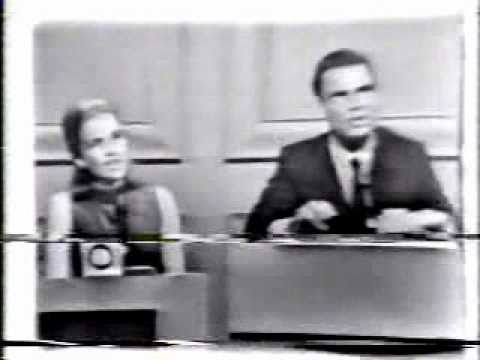







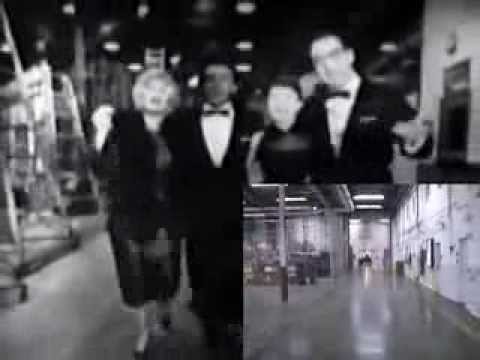

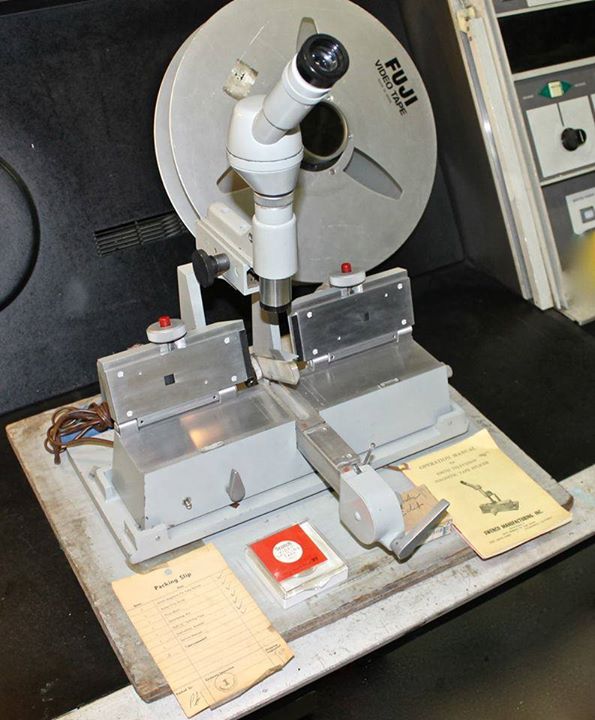

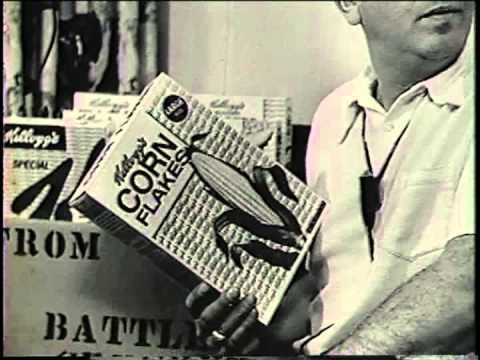



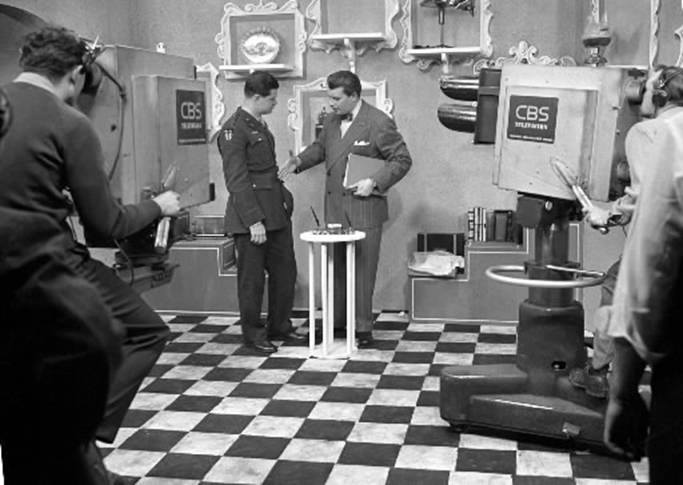



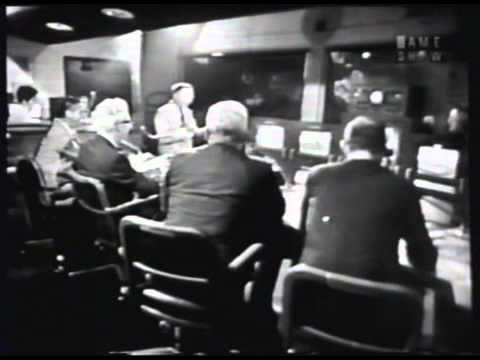



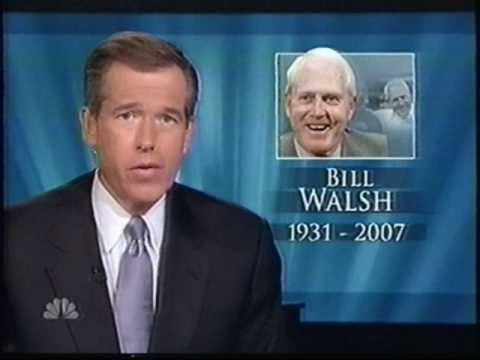

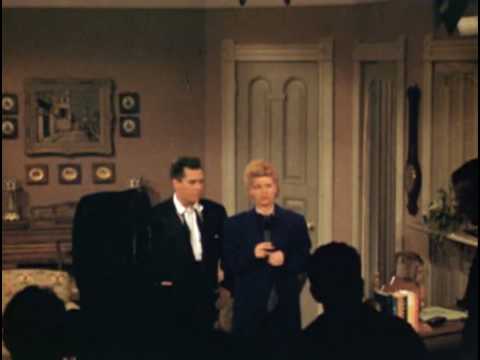



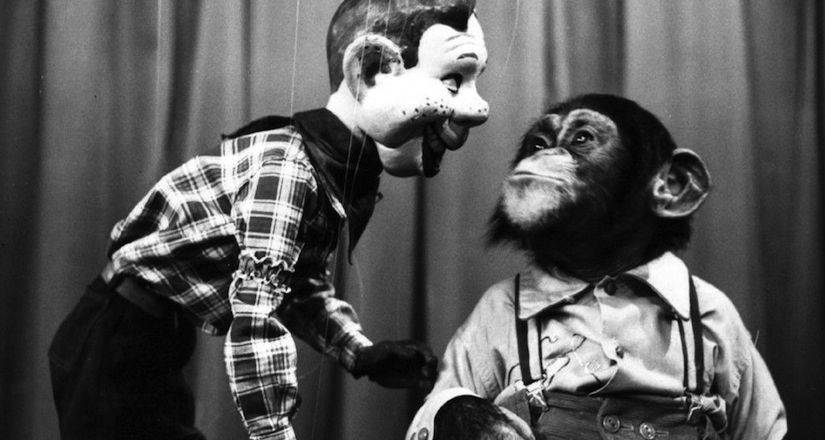

Posts in Category: TV History
Page 54 of 136
« Previous
1
2
3
4
5
6
7
8
9
10
11
12
13
14
15
16
17
18
19
20
21
22
23
24
25
26
27
28
29
30
31
32
33
34
35
36
37
38
39
40
41
42
43
44
45
46
47
48
49
50
51
52
53
54
55
56
57
58
59
60
61
62
63
64
65
66
67
68
69
70
71
72
73
74
75
76
77
78
79
80
81
82
83
84
85
86
87
88
89
90
91
92
93
94
95
96
97
98
99
100
101
102
103
104
105
106
107
108
109
110
111
112
113
114
115
116
117
118
119
120
121
122
123
124
125
126
127
128
129
130
131
132
133
134
135
136
Next » Ultra Rare And Historic Photos Of The RCA Orthicon Camera
On October 19, 2014
- Archives, TV History
This the first time I have ever seen close ups like this and we even have a photo of the camera in it’s carrying mode. This is the second version of this camera and is probably from 1942 or ’43.
In the last photo, we see the early, 1940 version of the camera with it’s CCU and power supply. I think the original was called the Type 1840 and notice it has the focus control in the pan handle like the old Iconoscope cameras and the TK41s. Notice this newer model has the focus control on the right side of the camera body and this is the first time the focus control was mounted there.
Although Dumont had used electronic viewfinders from the start, I do not think either model of this RCA Orthicon camera had them. Given the lenses are the same dual fixed focal length configuration as the RCA Iconoscope cameras, I’m pretty sure this too had a ground glass – optical viewfinder as well.
The Orthicon debuted just a year after the 1939 World’s Fair and the official launch of electronic television. The Orthicon was the forerunner to the much better Image Orthicon tube which came into use in 1945. This is a big improvement over the Iconoscope, but…this tube still required a lot of light and these cameras were mostly used mostly outside. I do have some photos of them in a studio, but I think that was purely for testing and demonstration purposes. Thanks to NBCU Photobank for the images. Enjoy and share! -Bobby Ellerbee

October 17, 1958…Video Tape Editing Makes It’s Debut!
On October 19, 2014
- TV History
October 17, 1958…Video Tape Editing Makes It’s Debut!
All week, we have danced around this subject with the Smith Block posts, but it was only this morning that I realized that we are at the 56th Anniversary of video tape editing. The following is excerpted from Richard Wirth’s article from March, which is included in full below.
The first official broadcast use of the Editor Synch Guide (ESG) system aired on October 17th, 1958, on the NBC special ‘An Evening With Fred Astaire’. It was also one of the first programs to be recorded on color videotape.
Video tape was introduced in late 1956 and as the 50’s wore on, more shows began to record in advance, but they had to be done live – recorded in their entirety in one pass. There was no way to stop and fix mistakes. It didn’t take engineers long to begin experimenting with ways to edit the unwieldy and unforgiving two-inch wide quadruplex recordings. Audiotape had been physically edited for years using a metal guide, a razor blade and some special adhesive tape. But television signals were more complicated, particularly in the way they were recorded on the tape.
NBC Burbank engineers and editors decided they had to come up with some kind of process to edit, and eventually they did. Kinescope equipment was still in use and available so they developed a system of editing using 16mm kinescope films. After a master videotape was recorded, a 16mm film “work print” would be made of it along with 16mm magnetic sound recordings. On the cue track of the master videotape, the sound area of the kinescoped film and the cue track of the 16mm sound recording engineers would record the Editor Sync Guide (ESG), a forerunner to what we know now as Time Code.
ESG consisted of a male voice calling out the minutes and a female voice calling out the seconds. Every 24 frames, there would be a one frame “beep” tone. Art Schneider, an NBC editor involved with the system’s creation, says in his book “Jump Cut” it took three people and a week to create the seventy-three minute ESG master recording.
The kine program would then be edited with frame accuracy using standard motion picture editing techniques. When complete, the tape was “conformed” to match the 16mm sound cue track. By the time the ESG was put into use, the manual videotape splicer had become more sophisticated to include adjustment dials and a microscope to ensure accuracy. Using the Smith Block, this became known as double system or offline editing.
Because of the twenty frame difference between the location of the video heads and the audio heads on the videotape machines, the 16mm sound track was used for all subsequent sound mixing and sweetening to maintain sync. After final mixing, it was laid back to the videotape in one pass.
The word of mouth buzz from Astaire program “literally opened up the floodgates to producers and directors who wanted their shows edited at NBC.” Word of its accuracy spread quickly and for about 10 years after, NBC Color City was place to go to edit your videotaped program! The editing on the Astaire program was minimal by comparison to some of the later efforts using the ESG system.
The ESG system was eventually used on ‘Rowan and Martin’s Laugh-In’…this was the first program use very quick cutting, sometimes just a few frames. For some segments, every camera take was a physical cut in the tape. It was said when the ‘Laugh-In’ master tapes were played, they had so many physical cuts they sounded like a machine gun firing as the tape passed the spinning video heads!
Many thanks to Richard Wirth for his fine work over the years. The full article, complete with videos is at this link. Enjoy and share! -Bobby Ellerbee
http://provideocoalition.com/pvcexclusive/story/the-demise-of-nbc-burbank-part-2
Recently, I wrote about the beginnings of NBC’s historic lot in Burbank as the Peacock network completed its move to nearby Universal Studios. The look back on NBC Burbank’s sixty-two year history wouldn’t be complete without exploring some of the technical history NBC engine…
Ultra Rare! Smith Block Editing Video…A Fine Follow Up
On October 18, 2014
- TV History
Ultra Rare! Smith Block Editing Video…A Fine Follow Up
Here is a short video of a BBC engineer editing 2″ tape with the Smith Block. There has been a lot of interest in the two prior posts this week and this is the perfect piece to top off this subject.
This is from this link http://www.vtoldboys.com/edit.htm# and there is other interesting early video tape editing information here, including how early electronic editing was done. Thanks thanks to Pat Phos Martin for sharing this with us. Enjoy and share! -Bobby Ellerbee
http://www.vtoldboys.com/editm01.htm


‘Hollywood Squares’…Unaired Pilot AND How Peter Marshall Won The Job
On October 18, 2014
- TV History
‘Hollywood Squares’…Unaired Pilot AND How Peter Marshall Won
I don’t think Bert Parks was ever really seriously considered for the role of host of this show, but for the pilot pitch to CBS…he’d be an OK choice. Obviously not though. After the pilot sat on Fred Silverman’s desk for six months, Heater & Quigley did another pilot with comedian Sandy Baron. CBS thought Parks to corney and Baron to “New Yorky”.
The director of the pilot, Larry White took the show to NBC after Silverman passed and they liked it, but they too did not like either host. This is when Peter’s name got put in the hat.
The short version is that Bob Quigley saw Peter in a Kellogg’s commercial and called him. They flew him to Sherman Oaks, showed him the pilot and Marshall liked it, but asked why they were interested in him and not Parks or Baron. Quigley said they wanted a “nonentity”. Marshall replied, “then, I’m your man”! The rest as they say is history.
Marshall’s starting salary was $1250 per week and the stars were paid union scale, which as the time was $750 a week.
Most don’t know it, but this was actually Marshall’s second time to host a game show. The first was a local LA show called ‘Stimulus’ which only ran for ten weeks, but it gave him some good experience.
By the way…Peter had reported long ago that NBC had dumped all of those tape archives, and he was right BUT! Low and behold, a cable channel somewhere found 3,500 episodes in their warehouse. Thanks to them, we can see most of these classic shows. Enjoy and share! -Bobby Ellerbee
Here’s the link to Part 2
https://www.youtube.com/watch?v=syMXK0Gxncc
https://www.youtube.com/watch?v=hrSvImHsUX4
Yep, I finally am back to uploading, and I forgot I had this saved weeks ago! Lazy me… Here’s a great one! It’s the original 1965 pilot of the classic cele…
RARE! ‘Hollywood Squares’ In Studio Shot…First And Only
On October 18, 2014
- TV History
ULTRA RARE! ‘Hollywood Squares’ In Studio Shot…The First And Only
Yesterday marked the 48th Anniversary of the debut of ‘Hollywood Squares’ on NBC, which began the long run of the original daytime show from October 17, 1966 – June 20, 1980.
Although I have looked high and low, this is the only backstage shot I have ever seen that shows the cameras and I thank Randy West for sharing it. I’m sure the show started with RCA TK41s and would love to find a picture of that, but till one turns up, here are RCA TK44s on the set. Does anyone know which studio this came from at NBC Burbank? Enjoy and share! -Bobby Ellerbee


This Was Indeed, The Start Of Something BIG! The Roone Arlidge Era
On October 17, 2014
- TV History
This Was Indeed, The Start Of Something BIG! The Roone Arlidge Era
This video is from the last episode of ABC’s ‘Wide World Of Sports’ debut season which started April 29, 1961. This clip highlights some firsts in football coverage.
This is the first use of a crane camera over the field, microphones on the quarterbacks and possibly, handheld sideline coverage in a professional football game. (NBC used RCA’s Walky Looky on some college games in the late 50s). The video is quite historic.
In January of ’62, WWOS was given a permanent time slot where it remained for over forty years. The show was the creation of Edgar Scherick through his company, Sports Programs, Inc. After selling his company to the American Broadcasting Company, and joining them to run ABC Sports, he hired a young Roone Arledge to produce the show.
Around 1956, after graduating with a masters degree from Columbia College, Arlidge got a stage manager’s job at NBC’s New York City station, which was then WRCA. One of his assignments there was to help produce a children’s puppet show hosted by Shari Lewis.
Sometime in late 1960, Arledge convinced his superiors at WRCA to let him film a pilot of a show he called ‘For Men Only’. While his superiors liked the pilot, they told him they couldn’t find a place in the programming schedule for it. But the WRCA weatherman, Pat Hernon, who hosted the pilot, began showing it and Edgar Scherick was one of the people who saw it.
While Scherick wasn’t interested in ‘For Men Only’, he recognized the talent Arledge had. Arledge realized ABC was the organization he was looking to join. The lack of a formal organization would offer him the opportunity to claim real power when the network matured, so, he signed on with Scherick as an assistant producer for WWOS.
Several months before ABC began broadcasting NCAA college football games, Arledge sent Scherick a remarkable memo, filled with television production concepts which sports broadcasts have adhered to since. Previously, network sporting broadcasts had consisted of simple set-ups and focused on the game itself. The genius of Arledge in this memo was not that he offered another way to broadcast the game to the sports fan. The genius was to recognize television had to take the sports fan to the game.
In addition, Arledge realized that the broadcasts needed to attract and hold the attention of women viewers. At age 29 on September 17, 1960 he put his vision into reality with ABC’s first NCAA college football broadcast from Birmingham, Alabama, between Alabama Crimson Tide and the Georgia Bulldogs. Sports broadcasting has not been the same since. Thanks to Chaz Bryant for the clip. Enjoy, share and Go Dawgs! -Bobby Ellerbee


NBC Burbank 1958…Here’s A Drive By
On October 17, 2014
- TV History
Speaking Of NBC Burbank And 1958…Here’s A Drive By
In the last post, we saw a 1958 clip of Steve Allen and company singing and strolling the halls inside 3000 West Alameda…here’s the outside. Thanks to David Crosthwait and DC Video for this trip down memory lane. Enjoy and share! -Bobby Ellerbee
https://www.youtube.com/watch?v=Us2flcoPut0
This is a 1958 videotape of NBC Burbank as recorded on 2″ Quad in a mobile unit. The show opens as the camera travels down California Street, takes a right t…


Steve Allen Special…Singing Tour Of NBC Burbank
On October 17, 2014
- TV History, Viewseum
Special Updated Version Of NBC Burbank Stroll!
In yesterday’s post of the Jimmy Fallon record release, I mentioned that he was not the first ‘Tonight’ host to have a record charted in Billboard Magazine. Steve Allen was, and here is the song that he wrote and recorded in a very special television version!
This is the original 1958 footage of the famous stroll through NBC Burbank updated in 2013 with a present day look to the same route. Enjoy and share! -Bobby Ellerbee
The Smith Block, Up Close And Personal
On October 17, 2014
- TV History
In Case You Missed This…The Smith Block, Up Close And Personal
Earlier in the week, I posted a photo of a 1965 NBC videotape edit session using the Smith Block. Thanks to David Crosthwait at DC Video, here are some awesome close ups of the Smith Block which was created by NBC Burbank editor Bob Smith.


The Great Dennis James…A Video Tribute By Monty Hall
On October 16, 2014
- TV History
The Great Dennis James…A Video Tribute By Monty Hall
Few have had a carrier like this…as you’ll see, even Frank Sinatra and Bob Hope respected the trail he blazed. Dennis James was among the first television announcers and game show hosts, and “made his bones”, partially by cracking chicken bones (on mic) as he called wrestling matches which were a staple of early television. He is also the first person to record a commercial on video tape, but his depth and stature is much greater. As good friend Monty Hall will tell you, Dennis James is truly one of television’s great pioneers. Enjoy and share! -Bobby Ellerbee
https://www.youtube.com/watch?v=0IihYyy3hZ4
This Video Chronicles the life of Television Pioneer and Game Show Icon Dennis James.
Another Of Television’s First Game Shows…’Cash And Carry’
On October 16, 2014
- TV History
Another Of Television’s First Game Shows…’Cash And Carry’
This may actually be network television’s first game show. The distinction here is “network television”, as this debuted on June 20, 1946 on Dumont and was broadcast in New York and Washington.
Earlier today, we looked at the CBS game show ‘Missus Goes – A -Shopping’ which aired in 1944, but that was only shown in New York City. As we also saw, ‘It’s A Gift’ debuted in January of ’46 on CBS, but that’s several months after ‘Cash And Carry’ with Dennis James.
I wanted to post this to do two things…connect some dots in the history department and to prepare you to meet Dennis James. In the next post, there is a superb video tribute to one of television’s true pioneers. Don’t miss it! Enjoy and Share! -Bobby Ellerbee
By the way, ‘Cash And Carry’ was broadcast from Dumont’s first studios located inside Wanamaker’s Department Store in NYC.
One Of CBS Television’s First Game Show Hosts…John Reed King
On October 16, 2014
- TV History
One Of CBS Television’s First Game Show Hosts…John Reed King
Pictured here is John Reed King hosting ‘It’s A Gift’. There’s a good chance this photo was taken the night of the show’s debut, January 29, 1946 in what is probably CBS Studio 42 at Grand Central Terminal.
This television story actually starts two years earlier. One of, if not the first, CBS television game show was ‘Missus’ Goes – A – Shopping’ which debuted the evening of August 3, 1944. King was the host of that show too, on radio and on television. When ‘Missus’ left the air, it was replaced by ‘It’s A Gift’ on January 29, 1946.
With King as host, ‘Missus Goes A-Shopping’ ran on CBS Radio from February of 1941 till December of 1951. Bud Collier took over the radio show when King took it to television. In 1952, Bill Cullen was his announcer and on camera assistant on ‘Give And Take’.
In addition to his radio and television quiz shows, Mr. King was also notable as the voice of many Paramount newsreels, and for a time he was coordinating producer of the series. His voice can often be heard on the Turner Movie Classics cable network when the movie newsreels are replayed from time to time.
One of John’s best known roles in radio was as the star of ‘Sky King’. In television, he is celebrated as the producer of one of the most popular series of the late 1950’s, ‘Death Valley Days’, which featured, among other hosts, Ronald Reagan.
From 1933 to 1936, while attending Princeton University, King broadcast news for the CBS network in New York. During World War II, King worked in Europe with CBS newsmen Edward R. Murrow and Robert Trout. At the height of the hostilities, King narrated a weekly news show in French beamed into occupied France. In later life, he retired to Fresno, California but kept his hand in the advertising business. Mr. King died in 1979. Enjoy and share! -Bobby Ellerbee
Rare…CBS Studio 52 Spec Sheets From 1961
On October 16, 2014
- TV History
Rare…CBS Studio 52 Spec Sheets From 1961
At one time, the CBS production office had a big book listing all their studios, complete with diagrams of the stage and all the technical specifications. Thanks to Gady Reinhold, we get to see these pages on Studio 52 from the 1961 edition.
Having just seen this studio in the IGAS video post just before this should make this a lot more interesting. A lot of CBS game shows came from here including ‘I’ve Got A Secret’, ‘To Tell The Truth’, ‘What’s My Line’, ‘Password’ and several soap operas eventually came from here including ‘Love Of Life’. ‘The Arthur Godfrey Show’ and ‘Arthur Murray’s Dance Party’ also came from 52.
I think the first television shows done here may have been ‘The 54th Street Revue’ directed by Ralph Levy in late 1949. Enjoy and share! -Bobby Ellerbee


‘I’ve Got A Secret’…Backstage Video 1962
On October 16, 2014
- TV History, Viewseum
‘I’ve Got A Secret’…Backstage Video 1962
A Rare Look At CBS Studio 52
This opens in the Control Room and moves to the stage of Studio 52. This is a long and narrow building with the entrance on West 54th Street and the back door on 53rd and is just behind The Ed Sullivan Theater, which is on Broadway.
As you watch, here is a key for orientation…entering from 54th street, the stage is on the left and the control room is on the right. As you’ll see, there is very little seating on the studio floor as 90% of the audience is in the balcony, which is still there. I was in this building in May. Here is the CBS Spec Sheet for this studio.
The show moved here from Studio 59 in late 1960 and this is the show’s 10th Anniversary episode. Enjoy and share! -Bobby Ellerbee
How’s This For RARE? ‘Tonight’ Show, Debut Ad
On October 15, 2014
- TV History
How’s This For RARE? ‘Tonight’ Show, Debut Ad
Thanks to Maureen Caney, here is a print ad that ran Sunday, September 26, 1954 announcing the debut of ‘Tonight’ With Steve Allen, the next night. The first guests to ever appear on ‘Tonight’ were Martha Raye and The Inkspots.
On September 27th of this year, ‘Tonight’ turned 60, but to my amazement, nothing was said about it and there was no celebration. Tony Bennett was on the show that night and even though he was on Johnny Carson’s debut show, not a word about any of the show’s proud history was mentioned. Thanks to Maureen, there are more interesting ads to come. Enjoy and share! -Bobby Ellerbee


October 15, 1973…’Tomorrow’ Debuted On NBC
On October 15, 2014
- TV History
October 15, 1973…’Tomorrow’ Debuted On NBC
The only way to remember this great show is to remember what made it great…Tom Snyder. On the event of his death in 2007, here are remembrances from Brian Williams, Jay Leno and David Letterman. Incidentally, Letterman’s NBC show replaced ‘Tomorrow’.
‘Tomorrow’ followed ‘Tonight’ With Johnny Carson and started as a 60-minute series which aired only four nights a week, Monday through Thursday, in order to accommodate the weekly shows ‘Midnight Special’ (1973–81) and SCTV (1981–82) in that time slot on Fridays. It was originally broadcast from the NBC studios in Burbank, but relocated to New York in December 1974 when Snyder took on additional anchor duties for NBC News and the network’s flagship station, WNBC-TV. Our friend Joel Tator who directed the show started with Tom in LA, went with him to NYC and returned with him to LA.
In June 1977, the show returned to Burbank until 1979, when Snyder once again began originating from 30 Rockefeller Plaza.
On September 16, 1980, when ‘Tonight’ was shortened to 60 minutes, ‘Tomorrow’ was scheduled at 12:30 Eastern and lengthened to 90 minutes, a format that lasted until its cancellation 16 months later. In February 1982, NBC replaced ‘Tomorrow Coast-To-Coast’ with ‘Late Night With David Letterman’. Enjoy and share! -Bobby Ellerbee
I LOVE LUCY Behind The Scenes 1953
On October 15, 2014
- TV History
On The Set Of ‘I Love Lucy’
This is a close to “being there” as we’ll ever get. This clip from an ‘I Love Lucy’ movie takes us inside the Desilu Playhouse and gives us an ultra rare glimpse of what it was like on the set of one of television’s most famous shows.
As we have confirmed with other sources, this was pretty much the same warm up that Desi used for the entire six years, including the camera push in. Enjoy!


October 15, 1951…’I Love Lucy’ Debuts On CBS, Tribute 3 Of 4
On October 15, 2014
- TV History
October 15, 1951…’I Love Lucy’ Debuts On CBS, Tribute 3 Of 4
Rare Color Footage…In Context
As you saw in the pilot episode post just before this, the script from the pilot was rewritten and was used as Episode 6, Season 1 with the title “The Audition”. In the closing curtain call here, we even see Pepito again briefly.
Although photos and filming by anyone on the set was prohibited, somehow, someone in the audience the night of October 12, 1951 managed to get these few minutes of color film, which is expertly edited into footage from this episode.
I have posted all of today’s videos before, but now for the first time, with all of them together, there is a greater context for you to see the linkage between them. Enjoy and share! -Bobby Ellerbee
https://www.youtube.com/watch?v=OxsiItd1iN8
A Request from an “I Love Lucy” fan who lives in New Jersey, United States. This short 8mm Color film Footage was fimed by an audience member of “I Love Lucy…


October 15, 1951…’I Love Lucy’ Debuts On CBS, Tribute 1 Of 4
On October 15, 2014
- TV History
October 15, 1951…’I Love Lucy’ Debuts On CBS, Tribute 1 Of 4
Original Stick Figure Intro And First Episode…
This is the a video lesson on the first of television’s most famous shows. In this post, there are a few surprises in this clip with film and photos from Episode 1, Season 1 and, the first episode which was titled “The Girls Want To Go To A Nightclub” which is at this link.
Before the “satin heart” intro that almost everyone on the planet has seen, the show’s entire six years of first run episodes used the animated stick figure opening that you will see below. The opening familiar to most viewers, featuring the credits superimposed over a “heart on satin” image, was created specifically for the 1959–67 CBS daytime network rebroadcasts.
For the original run of the show, the episodes opened with animated matchstick figures of Arnaz and Ball making reference to whoever the particular episode’s sponsor was. Here’s a surprise…these sequences were created by the animation team of William Hanna and Joseph Barbera, who declined screen credit because they were technically under exclusive contract to MGM at the time. More to come! Enjoy and Share! -Bobby Ellerbee
https://www.youtube.com/watch?v=_1rpAUhbARY
i Love Lucy Clip
The Peabody Awards – First Season Peabody Winners: Television’s Early Years
On October 14, 2014
- TV History
The Peabody Awards…First Season Winners From The Early Years
Some shows are so unique and shining that their merit is immediately recognizable. Here is the story of four programs that were awarded The Peabody in their first seasons, and why. Among the winners…’Howdy Doody’ in 1947, ‘Disneyland’ in 1954, ‘Lassie’ in 1955 and ‘Mr. Novak’ in 1963. Enjoy and share! -Bobby Ellerbee
http://www.peabodyawards.com/stories/story/first-season-peabody-winners-televisions-early-years
The Peabody Awards – First Season Peabody Winners: Television’s Early Years
After 70+ years of presentations, there are a vast number of Peabody Award winners, across numerous genres, all notable in their own way. Those shows which find resonance with multiple audiences over a great number of years, but were acknowledged as innovative and excellent from their very beginning…
Page 54 of 136
« Previous
1
2
3
4
5
6
7
8
9
10
11
12
13
14
15
16
17
18
19
20
21
22
23
24
25
26
27
28
29
30
31
32
33
34
35
36
37
38
39
40
41
42
43
44
45
46
47
48
49
50
51
52
53
54
55
56
57
58
59
60
61
62
63
64
65
66
67
68
69
70
71
72
73
74
75
76
77
78
79
80
81
82
83
84
85
86
87
88
89
90
91
92
93
94
95
96
97
98
99
100
101
102
103
104
105
106
107
108
109
110
111
112
113
114
115
116
117
118
119
120
121
122
123
124
125
126
127
128
129
130
131
132
133
134
135
136
Next »